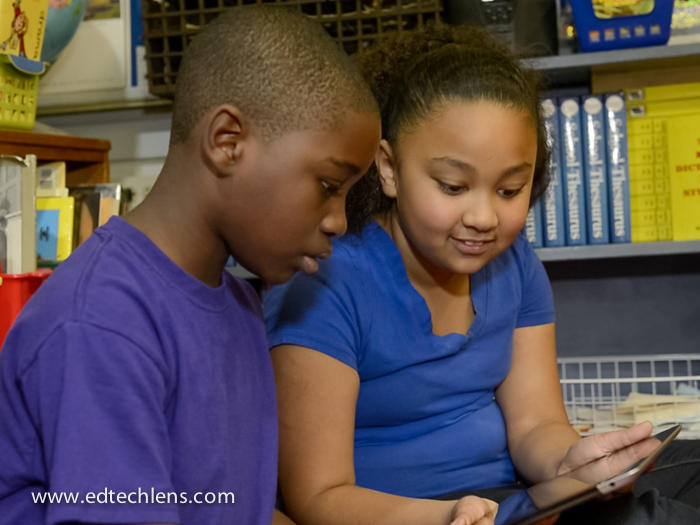
Neuroscience and Education: What Teachers Can Learn From Video Games
Video games are often perceived as the bane of parents’ and teachers’ existence, but Dr. Judy Willis suggests we can learn something from how willingly children submit to the work of advancing in these games. A neurologist and teacher, Willis says that video games aren’t the enemy of children’s learning. In fact, she says, “Video games provide a model for best strategies to apply to all of learning.”
After working for 15 years as a board certified neurologist, Willis taught elementary school for five years then middle school for another five years before transitioning to instructing teachers. Her unusual background gives her a unique perspective on education and how the brain helps students learn.
The Dopamine-Reward System
A key function of our brains is to help us detect both danger and the things that help us. One mechanism that allows it to do that is the release of dopamine, a neurotransmitter that produces a powerful pleasure response when it’s plentiful.
The dopamine-reward system for mammals generates a survival benefit by rewarding successful or beneficial behavior or response with pleasure. “For animal survival,” Willis says, “the dopamine-release from good predictions and challenges achieved promotes life or species-sustaining choices and behaviors, such as remembering a scent that was chosen from a number of options that led to a mate or a meal.”
The Power of Prediction and Feedback
The pleasure provided by the dopamine release after good predictions are made is part of what causes human beings – children in particular – to be “wired” to learn. Through repeated cycles of predicting, choosing, acting and then enjoying positive feedback on the challenges they meet, they can become motivated learners.
“Computer games that offer progressing levels of challenge, such as getting to a higher level of play, provide the feedback to the brain that it succeeded in the challenge and made the correct response,” Willis says. “These bursts of pleasure drive the brain to seek the next burst. Upon reaching the next level, gamers want to continue playing, even through increasing challenge and frequent failure. Actually, if the next level of play doesn’t pose a new challenge to achieve, the gamer loses interest since the dopamine-reward response won’t take place if there is no new task or skill to master. A computer game doesn’t hand out cash, toys, or even hugs. The motivation to persevere and pursue greater challenge at the next level is the brain seeking another surge of dopamine -- the fuel of intrinsic reinforcement.”
How Understanding the Effects of Dopamine Can Help Educators Motivate Learning
Fortunately this same fuel is available to educators. The dopamine reward pleasure response sustains motivation and interest in students who feel challenged but not overwhelmed, and it requires that the brain be aware that it solved a problem correctly. Teachers need to help students walk the line between frustration and boredom – to provide individualized, achievable challenges – and to give students frequent feedback.
The brain likes things that are about “here, now and me,” Willis says. “With children, this is even more the case: Their brains are strongly wired for immediate gratification.” This is why timely feedback is so important: It allows the brain the pleasurable experience from dopamine release when it is aware of progress being made, that sense of reaching the next level in a video game.
A Time-Efficient Way to Help Children Focus on Long-Term Goals
According to Willis, feedback should also be frequent, corrective, and noncritical, so “students recognize incorrect foundational knowledge and then have opportunities to strengthen the correct new memory circuits through practice and application.” But she also recognizes individualized instruction, assignments and feedback are time-consuming processes.
She suggests teachers keep in mind the need for achievable challenge and incremental progress feedback when they plan, and that they allow students to track their own progress. This serves as a time-saver for educators, and even more importantly, “it helps students sustain motivation and effort by having them record their own progress toward individualized goals,” she says. “Through brief conferences, teacher and student agree on goals, and students can create bar graphs to record and see evidence of their incremental goal progress.” (Or use the free graph templates available here.)
Using these methods helps children, whose brain’s prefrontal cortex (PFC) is not yet mature, begin to recognize the relationship between their effort and progress toward a goal. The PFC allows adults to see this relationship clearly. “It seems obvious to us, but young brains don’t see an effort-to-goal-progress correlation without explicit evidence,” Willis says.
The Tip of the Iceberg
The effect of dopamine is just one dynamic at play in the young brain. Willis has published dozens of articles exploring the intersection between brain science and learning. Links to these pieces are available for free on her website.
About Judy Willis, M.D. M.Ed.: Dr. Judy Willis, a board-certified neurologist has combined her 15 years as a practicing neurologist with ten subsequent years as a classroom teacher to become a leading authority in the neuroscience of learning. She’s written seven books about applying neuroscience research to classroom teaching strategies and currently serves as adjunct faculty at the University of California Santa Barbara Graduate School of Education. She travels nationally and internationally giving presentations, workshops, and consulting about learning and the brain. She has been interviewed by USA Today, Euronews, The Wall Street Journal, NBC News Education Nation, ABC Australia Radio, Lateline Australia, Popular Mechanics, Neurology Today, USA Today, Education Week, and Parenting Magazine among others. In 2011 she was selected by Edutopia as a “Big Thinker in Education.”

